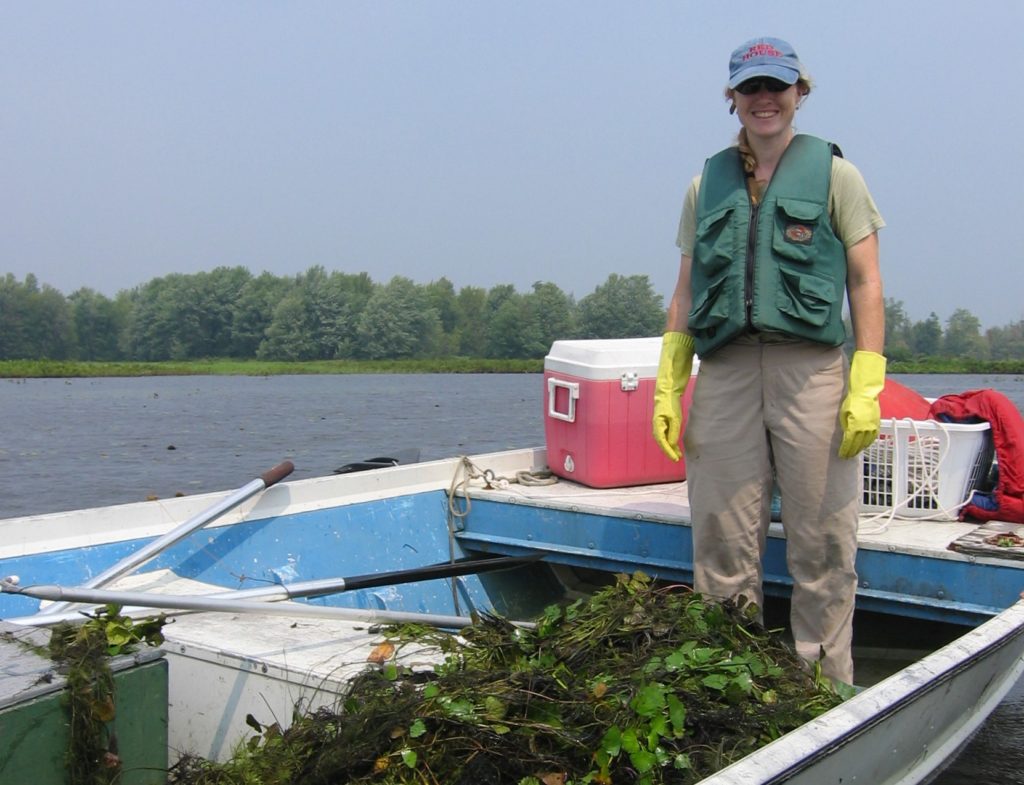Non-native plants and animals can spread rapidly and threaten existing ecosystems.
Once established, aquatic nuisance species (ANS) are difficult to control and often impossible to eradicate because of their ability to out-compete native species for resources and their lack of natural predators.
The most effective measures to control ANS are prevention, early detection, and rapid response to new invasions. Control measures for ANS include mechanical (cutting/pulling), chemical (aquatic pesticides), and biological (introduction of natural predators specific to the ANS).
Changing environmental conditions–including temperature, precipitation, nutrient availability, and CO2 concentration–play a critical role in defining species’ geographic range. Therefore, climate change is a key factor in ANS management.

Perhaps the best-known ANS is the zebra mussel, which has spread across the U.S. Another damaging ANS in our region is the Eurasian water milfoil, a plant that’s invaded waters throughout New England, displacing native plants and reducing biodiversity.
NEIWPCC has joined with other organizations to step up efforts to address the ANS problem. As a founding member of the Northeast Aquatic Nuisance Species Panel, we partner in the panel’s efforts to increase visibility of ANS problems in the Northeast and facilitate funding and grant awards to the region.
NEIWPCC and the Lake Champlain Basin Program (LCBP) are fighting against the spread of the zebra mussel, which disrupts the food chain and clogs power plant and drinking water intakes. NEIWPCC staff assist the Lake Champlain Zebra Mussel Monitoring Program by sampling the lake and its tributaries for juvenile mussels and looking for changes in water chemistry that may have occurred as a result of zebra mussel introduction. We also participate in sessions aimed at determining ways to prevent ANS from moving through the Champlain Canal system.
Additional Resources:
- Aquatic Nuisance Species Task Force (U.S. Fish and Wildlife Service)
- Northeast Aquatic Nuisance Species Panel
